Atlantic Monthly Contributors's Blog, page 437
May 1, 2015
The Big Question: Reader Poll

We asked readers to answer our question for the June issue: Which current behavior will be most unthinkable 100 years hence? Vote for your favorite response—or submit your own at the bottom of the poll. We’ll publish the results online and in the next issue of the magazine.
Create your own user feedback surveyComing up in July/August: What was the most significant airplane flight in history? Email your nomination to bigquestion@theatlantic.com for a chance to appear in the July/August issue of the magazine and the next reader poll.







The Dodger: Floyd Mayweather and the Impunity of Genius
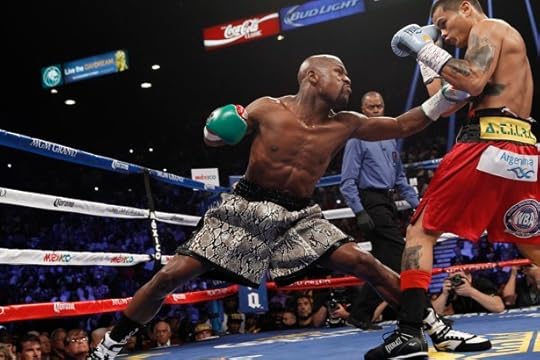
On Saturday, Floyd Mayweather Jr. will fight against Manny Pacquiao at the MGM Grand Garden Arena in Las Vegas—a contest that is being billed, at once melodramatically and uncreatively, as “The Battle for Greatness.” Thousands of fans will watch the fight in person (according to Pacquiao’s promoter, the event's live gate receipts will reach $74 million), and millions more will pay $99.95 apiece to watch it from their homes. The purse for the contest that “has quickly become the biggest, most important event in recent boxing history” could exceed $100 million (Mayweather himself is expected to make “well over” that amount, with a payout that will likely be more than twice what any other boxer has ever received). Mayweather, whatever happens in the ring this weekend, will be guaranteed a paycheck of $50 million simply for showing up.
Related Story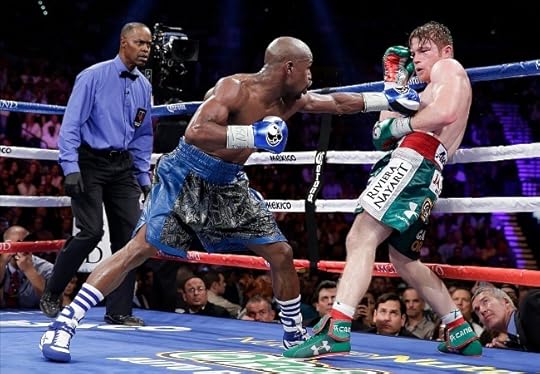
How Good Is Floyd Mayweather Jr.? Maybe Too Good
Not, of course, that he needs the money. At 38, Mayweather is the highest-paid athlete on the planet. “The zeroes in his bank account,” ESPN marveled, are “so numerous they blur together and become fuzzy to the naked eye.” Mayweather used to go by the nickname, in recognition of his perpetually youthful good looks, of “Pretty Boy”; these days, though, he is more commonly referred to as “Money Mayweather”—“Money” for short. Mayweather has a sportswear line and “lifestyle brand” called “The Money Team.” Justin Bieber helps him model it. The studio he once owned in Las Vegas was named Philthy Rich Records. He has been known to make wagers of $250,000 on the halftime scores of NFL games. He once counted out a million dollars, in cash, just for the spectacle of it. He wears $10,000 suits accessorized with hundreds of thousands’ worth of jewelry. He collects cars—Bentleys, Rolls-Royces—and flies on private jets. During fights, he wears $25,000 mouth guards made of $100 bills.
Which would all be fine.
Except for this.
"I was powerless. He was holding me down. I couldn't fight back. The kids were screaming and crying, 'You're hurting my Mom.'" -Josie Harris, the mother of three of Mayweather's children
Except for this.
“He was punching her and kicking her. He was punching her in the head and he was stomping on her shoulder.” -Zion, Mayweather’s then-9-year-old son, describing Mayweather’s beating of his mother, in a statement to police
Except for this.
"I fell to the ground, and Karra tried to help, and as she was, Mr. Mayweather hit her as well ... I have no clue [why Mayweather punched me]. I still have no clue. I think it was because I was friends with his kids' mom. He didn't like her to have friends.” -Herneatha McGill, whom Mayweather assaulted in a Las Vegas nightclub
Except. Except. Except.
“ After the dust settled, club security instructed McGill and Blackburn not to file a formal complaint against Mayweather or they would "pay for it in the streets," according to the women's testimony.” - Deadspin
"I saw my dad was on my mom and my dad said go to the ofice my dad was hiting her... Then I heard yelling and I came out and my dad was hiting my mom. It happened at 4:00 a.m. in the morning." -Koraun Mayweather, then 10 years old, in a self-written statement to police
“Just last month, a report surfaced that Mayweather allegedly put a rear naked choke on his ex-girlfriend's 19-year-old son." -ESPN, earlier this week
There is a certain purity to boxing. Sweat sprays, yes, and blood streams, yes, and bodies crumple in pain and defeat; combat waged in the ring, however—devoid of the typical causes and contexts and angers—strips the fight to atomic units of athleticism. Floyd Mayweather is sometimes described as “scientific” in his movements in the ring, boasting a precision to his punches that suggest not just the marvel of the human machine, but a triumph of a more symbolic strain: brain over brawn, control over chaos. Mayweather is smart and strategic, his hooks and jabs surgical in their accuracy and eloquent in their efficiency. Which is to say that Mayweather, as someone who is paid to punch, is great—not in the casual sense of the word, but in the epic. He may indeed be, as ESPN recently dubbed him, “the last great prizefighter.” Mayweather has, in some sense, already won the Battle for Greatness.
Mayweather is a bona fide celebrity, greeted with Roman-arena levels of adoration in the ring and outside of it.And so “TBE”—short for "The Best Ever," a nickname Mayweather gave to himself—is a bona-fide celebrity, greeted with Roman-arena levels of adoration whether he’s in the ring or outside of it, whether he’s appearing on The Tonight Show or the ESPY Awards or Nickelodeon's Kids’ Choice Awards. He competed on Dancing With the Stars, and danced a delightful cha-cha. He is supremely talented. He is extremely charismatic. He is widely beloved.
But that is Mayweather, the boxer. Mayweather, the athlete. Mayweather, the celebrity. The far more complicated character—Mayweather, the person—is very much not The Best Ever. Mayweather views women, it seems excruciatingly clear, as little more than property—as extensions, essentially, of all those collectible Bugattis and Gulfstreams and $10,000 suits. And he treats them accordingly. Last year, Mayweather produced an hour-long documentary about himself. In it, he explained:
When it comes to females … even though you can't drive 10 cars at one time, but … you got people that got 10 cars. So, you're able to keep maintenance up on 10 cars. So, I feel that, as far as when it comes to females, that same thing should apply. If you're able to take care of 20, then you should have 20.
Around the same time, Mayweather used his Instagram account to offer some unsolicited advice to women. "How a female dresses is her advertisement," the boxer’s pictogram—scrawled, as if in schoolhouse chalk—began. "If a female shows half of her body, she's asking to be disrespected."
Mayweather has made a point of humiliating ex-girlfriends on social media—claiming to have paid for Shantel Jackson's plastic surgery, he joked that he wanted his money back because "I'm an Indian Giver"—and made jokes about her alleged financial difficulties. He took down Jackson's Instagram page, Deadspin notes, which he had previously helped to set up. (In response to this, Jackson created a new page, explaining that the old one "got erased by a jealous person who spent money to get it done. All because I said NO.") Last year, after reports came out that Jackson had begun dating the rapper Nelly, Mayweather posted, to his Facebook page, a sonogram image of what he claimed were two fetuses that Jackson had aborted. "The real reason me and Shantel Christine Jackson @missjackson broke up was because she got a abortion [sic]," Mayweather wrote, "and I'm totally against killing babies. She killed our twin babies."
The post was quickly flooded with outraged comments, after which Mayweather deleted it. In radio interviews he gave after the incident, however, he seemed to stand by his treatment of his former girlfriend.
In September, Jackson sued Mayweather, alleging abuse during the course of their relationship. One of her claims was that, when she threatened to leave him, Mayweather pointed a gun at her foot, asking, “Which toe do you want me to shoot?”
* * *
So there is Mayweather, the talent and the athlete and the entrepreneur, and there is Mayweather, the inflicter of domestic violence and the wager of psychological warfare. "The boxer and the batterer," Grantland summed it up, eloquently and perfectly. What are fans to make of that? Why haven't the repeated, egregious allegations against Mayweather—accompanied by conclusions of his guilt by way of both pleas and court findings—diminished his reputation, his wealth, or his fame? It’s hard not to compare Mayweather, in all that, to Ray Rice. And to Bill Cosby. And to Woody Allen. And Michael Jackson, and R. Kelly, and Bill Murray, and CeeLo Green, and Sean Connery, and Sean Penn, and Roman Polanski, and Julian Assange, and Terry Richardson, and Charlie Sheen, and Nic Cage, and Chris Brown, and all the other men—it is usually men—who are extremely successful as performers but much less so, per the accounts of those who know them, as people.
The pattern of battery is treated as an awkward footnote to his story.Allegations, of course, are just that. And it is good that people are, in general, hesitant to assign and assume guilt until the guilt has been fully proven. But Mayweather’s history of out-of-the-ring punch-throwing—the history we know of through arrest and court records, at least—extends over more than 12 years and includes at least seven separate physical assaults on five different women. The pattern of battery has been painstakingly documented, by the courts and the media. But it is treated, for the most part, merely as an awkward footnote to Mayweather’s story of greatness and grandeur. It has become one of the most pernicious things there is: an open secret.
Which is bizarre, and disappointing, and sad. Mel Gibson made anti-Semitic comments, and they got tons of attention, and generated widespread indignation and outrage, and now his career is effectively over. Floyd Mayweather is said to have bashed his girlfriend’s face with a car door; on Saturday, wearing a mouthguard made of money, he will stride onto a stage surrounded by thousands of cheering fans. He will throw a few (more) punches. He will walk away from the event with more than $100 million.
* * *
That is a failing—one in which anyone who watches the proceedings on Saturday is complicit. We can talk about the justice system and the court of public opinion, about celebrities and victims and plea bargains and the notion of "doing time"; the other matter, though, is how a man like Mayweather is able to operate, with nearly utter impunity, at the upper echelons of the culture. (When Katie Couric asked him about the charges against him earlier this month, he replied with an evasive "I’m black. I’m rich. And I’m outspoken. Those are three strikes right there.") He seems to revel in his own Teflonic status. Last year, after the NFL lengthened its suspension of Ray Rice, Mayweather commented, teasingly, "I think there's a lot worse things that go on in other people's households, also. It's just not caught on video." (Josie Harris has alleged that Mayweather's abuse involved "rabbit punches"—jabs to the back of the head that are banned across all combat sports for the dangers they represent, and that are also infamous for their tendency to leave few visible marks on their victims.)
Observers like to talk about great boxers' ability to “float” around the ring, as if they are somehow uniquely exempt from gravity's bulky inconveniences; Mayweather is translating the physics of athletic exceptionalism to the world beyond the ring. He is floating. And many people are buoying him.
At this point, Mayweather is not just a person, but a franchise.Partly, likely, that has to do with all the millions that Mayweather will make on Saturday: At this point, he is not just a person, but a franchise. The boxing establishment has an interest, financial and otherwise, in Mayweather's success as a performer. So does the city of Las Vegas, and the state of Nevada, and the whole entertainment industrial complex. Mayweather did a (two-month) stint in prison following a plea deal (the bargain helped him avoid charges that could have led to up to 34 years in jail); the sentencing judge agreed to delay the start of the prison term so Mayweather could fight Miguel Cotto over the weekend of Cinco de Mayo. The reason for the extension? Mayweather's economic value to Vegas. And the Nevada State Athletic Commission, which is able to revoke a fighter's license for arrests, convictions, or crimes of “moral turpitude,” never suspended Mayweather—“even though,” Deadspin notes, “he has been arrested and charged with battery, theft, and/or obstructing police on multiple occasions.” (The commission did, however, see fit to suspend the boxer Julio César Chávez Jr. for nine months and revoke the license of Joel Casamayor. Both of them, it seems, had tested positive for marijuana.)
It's about something more than money, though. Mayweather glides through the world with impunity for the same general reason that Mike Tyson, a convicted rapist, is enjoying a second life as a cartoon TV detective; and that Roman Polanski, who raped a 13-year-old, won an Oscar to a standing ovation; and that John Lennon, who admitted to battering women, remains revered as a musician and an artist; and that Jameis Winston just got a job with the Tampa Bay Buccaneers as the NFL's number-one draft pick. We are not good at distinguishing between "actor" and "character." We are not conditioned to see celebrities, in particular, as holistic people, subject to the complicated constellation of entitlements and responsibilities that personhood entails for the rest of us.
In the same way we strive to balance "work" and "life," as if the two can be tidily extricated from each other, we insistently distinguish between "talent" and the dirtier stuff of practice and struggle and desire. We may praise hard work—the cornerstone of the American Dream, and all that!—but what we really value, deep in our souls, is talent. The stuff that seems, in some way, pre-ordained. Work is sweaty, and messy, and a little bit desperate. Talent, on the other hand, is natural and effortless and serene. Talent floats. Talent, by the mere fact of its existence, allows us to believe in something bigger than ourselves—in beauty, in destiny, in "greatness." It allows us to trust in the order of things. It allows us to believe in heroes. It allows us our idols.
Except. Except. Except.
"I'm going to kill the man you're messing around with.... I'm going to get someone to pour acid on you." -Floyd Mayweather, to according to Josie Harris, in a 2010 police report
Deborah Lippis, the Justice of the Peace who found Mayweather guilty of two acts of battery for his punching of Herneatha McGill and Karra Blackburn in a Las Vegas nightclub in 2003, told Mayweather: "You may be a terrific and famous fighter, but that doesn't make you a god."
Mayweather may forget that. He may hope the rest of us do, too. Last week, while the man who gets paid to punch was doing a red carpet event, an ESPN reporter attempted to question him about his criminal record. “In your case, there’s been actual convictions and no governing body has ever suspended you or sanctioned you,” John Barr pointed out. “What message do you think that sends victims of domestic violence?”
Mayweather did what he has become so supremely skilled at doing: He slipped the punch. “Honestly, I want everybody to tune in May second,” he replied to his questioner. “Mayweather versus Pacquiao. This is the fight that you can’t miss.”







Avengers: Age of Ultron Is Too Much of a Good Thing
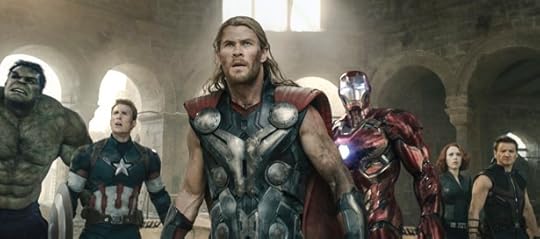
When Joss Whedon set out to make his first Avengers movie, the task seemed an unprecedented pop-cultural juggling act: Bring together heroes from four separate Marvel franchises with very different aesthetics—from World War II pulp to extraterrestrial Nordic polytheism—add in an overarching storyline about the spy organization SHIELD (along with a half-dozen affiliated characters), and try desperately not to fall flat on your face. Against all probability, Whedon utterly triumphed, producing an action mega-blockbuster with the soul of a drawing-room comedy.
Related Story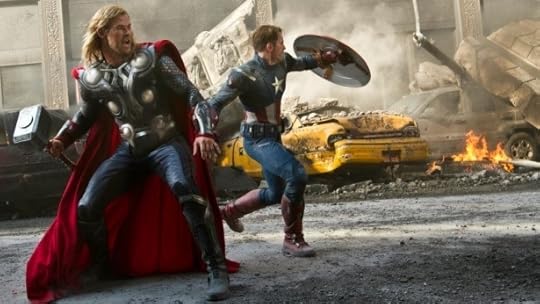
For Avengers: Age of Ultron, that already ridiculous challenge has been upped exponentially. In addition to all the above, the movie throws into the mix four new major characters (Ultron, Scarlet Witch, Quicksilver, and the Vision); all of their respective origin stories; cameos of various sizes by fellow Marvel personalities War Machine, Falcon, Peggy Carter, Heimdall, and Erik Selvig; and the ever-heavier burden of serving as a bridge between all the Marvel movies that have been made to date and all those yet to come. (Hello, Black Panther’s Wakanda!) It’s the cinematic equivalent of juggling chainsaws while riding a unicycle. On a tightrope. Across the Grand Canyon.
To say that Whedon succeeds only in part scarcely counts as a criticism. (To belabor the metaphor: He may have dropped a chainsaw or two, but he got across safely.) Age of Ultron is a strong opener for the summer blockbuster season; it’s just not a mind-blowing quasi-revelation like its predecessor. The sharp, interpersonal dramedy that made the first movie such a delight is again present in flashes, but not infrequently it is drowned out by the noisy, inevitable need to Save the World.
The story begins where it left off. Not at the end of the previous Avengers, mind you—that would be too straightforward—but at the end of last year’s Captain America: The Winter Soldier. Having located the wooded alpine lair of Hydra commander Baron von Strucker (Thomas Kretschmann), the Avengers proceed to assault it. Therein they find both Loki’s scepter and a pair of decidedly unfriendly super-powered twins, Pietro and Wanda Maximoff, played by Aaron Taylor-Johnson and Elizabeth Olsen, respectively. (The super-monikers are never used but, yes, these are Quicksilver and the Scarlet Witch.)
Upon returning the scepter to the Avengers’ spiffy Manhattan HQ, Tony Stark (Robert Downey Jr.) and Bruce Banner (Mark Ruffalo) proceed to examine the gemstone embedded in it. This stone (Marvel fans will long since have deduced its identity) leads them to a breakthrough in artificial intelligence, enabling the creation of a Stark pet project, the “Ultron” program: robotic peacekeepers who can do the Avengers’ job for them when they are otherwise engaged. Not that Stark and Banner bother to tell anyone else about their little breakthrough. “I don’t want to hear the ‘man was not meant to meddle’ medley,” Stark explains. “Peace in our time—imagine that.”
Alas, peace never gets much beyond the imagination stage. No sooner does Ultron (voiced by James Spader) awake than he goes all Modern Prometheus on the gang, in the process breaking up a perfectly good house party, destroying Stark’s butler/operating system Jarvis (Paul Bettany), and announcing, with Spaderian relish, his intent to eradicate humanity. Oops.
An awful lot of the final act revolves around the rescue of nameless Sokovians.From there the movie proceeds largely as one might expect. Ultron creates an army of metal Mini-Mes and recruits the Maximoff twins to his cause. Wanda, a telepath, messes with the Avengers’ minds—to particularly dramatic effect with Banner/Hulk—and Pietro runs circles around them, though never, alas, to the tune of Jim Croce’s “Time in a Bottle.” The Avengers crisscross the globe—East Africa, Oslo, Seoul—in pursuit of their new nemesis. Along the way, Captain America (Chris Evans) polices his teammates’ foul language, Black Widow (Scarlett Johansson) tries to make us forget that she had a much better haircut in Winter Soldier, Hawkeye (Jeremy Renner) reveals a Dark Secret, and Thor (Chris Hemsworth) flexes his steroidal-Shakespearean biceps. Nick Fury (Samuel L. Jackson) makes a dramatic entrance or two.
There are, of course, several action sequences in which the Avengers fight with Ultron, with the Maximoffs, and among themselves. These all culminate in a long final showdown back in Sokovia, the same fictional Eastern European nation where the movie began at Strucker’s lair. I confess that it’s here that Age of Ultron began to lose me. The battle with an army of innumerable CGI opponents felt altogether too familiar, even if this time Whedon exchanged aliens for robots. Moreover, one of the advantages Marvel has always held over DC Comics is that it’s more typically set in the real world (e.g., New York City over Metropolis), and try as I might I found it hard to get terribly worked up about the fate of Sokovia. And while I genuinely appreciate Joss Whedon’s sentiments on reducing collateral civilian damage, an awful lot of the final act revolves around the rescue of nameless, line-less, interchangeable Sokovians. Give me a skeptical NYPD sergeant won over by Cap's heroics any day.
There’s plenty to like in Age of Ultron. The dialogue is sharp and the actors mostly hit their marks—Taylor-Johnson and Olsen’s tongue-y accents notwithstanding. A series of gags about Thor’s hammer is a particular pleasure, and there’s an unexpected soulfulness to Bettany’s rebirth as the Vision. But the hectic demands of so many character introductions and plot twists and battle sequences and Marvel tie-ins inevitably crowd such moments to the margins. A playful romance between Black Widow and Banner never quite catches fire, and Hawkeye’s humanizing backstory feels half-hearted. There’s simply too much going on: Age of Ultron covers far more ground in two and a half hours than Marvel’s recent Netflix series, Daredevil, did in thirteen.
After shooting the first Avengers, Whedon said his “detox” was the unassuming black-and-white adaptation of Much Ado About Nothing that he shot at his own house during a two-week “vacation” from post-production. By the time it finally winds into its conclusion, Age of Ultron feels as if it’s in need of a detox of its own, or at least a mild purge of some sort. It’s telling that the single loosest, most entertaining sequence in the entire film is the wisecracking party at Avengers HQ before Ultron even shows up. Which raises the heretical thoughts: What if the villain had never shown up? What if the world didn’t need saving at all? What if the movie had dared to offer less “ado” and more “nothing”?







Beyond Hashtag Activism
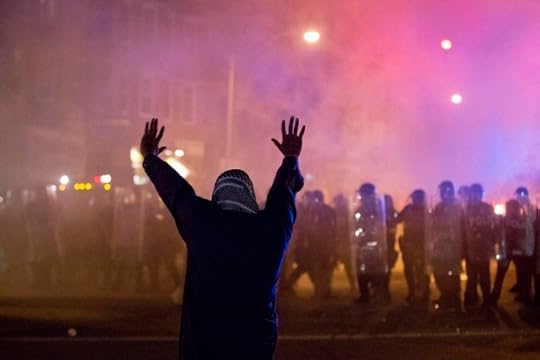
If you've heard of Joseph Kent, you probably only learned his name in the last couple of days. Late Tuesday night, a CNN camera caught a spooky video of Kent being arrested in Baltimore: As Kent walked in the street, a humvee drove between him and the camera, just as a line of police lunged at the young man. Then he wasn't heard from again for 24 hours. Talib Kweli tweeted a demand to know where he was, and Kent's name trended on Twitter. Dark conspiracy theories suggested he'd been kidnapped or disappeared.
It turned out that Kent, a 21-year-old student at Morgan State University in Baltimore, was waiting in a holding cell in the city jail. The facility was so crowded with people swept up by police during unrest that he hadn't been booked, which meant his name wasn't in the jail's system yet and so no one could find him. His attorney, Steve Beatty, was able to locate him Wednesday and to get him released on his own recognizance that night.
Kent is, in fact, more easily recognizable in Baltimore. City Paper, the local alternative weekly, profiled him in November 2014, in a piece about how the aftermath of Michael Brown's shooting in Ferguson, Missouri, was creating a new cohort of civic leaders. Reporter Baynard Woods recounted Kent maintaining peace during a tense situation, near the end of a march in Baltimore protesting a grand jury's decision not to charge Officer Darren Wilson for Michael Brown's death:
"We been peaceful all day, and now everybody want to show your ass," Joseph Kent, a 21-year-old student from Morgan State University, said from the center of the crowd near the end of Tuesday's protests over the grand jury decision in Ferguson, Missouri. "We're not here for that."
Kent says he was again trying to keep the peace when he was arrested Tuesday. His attorney, Steve Beatty, told me on Thursday that the only charge pending was for one count of violating curfew, a misdemeanor. "I've read it a couple times; I don’t even see a penalty in it," he said. Beatty believes the media attention helped Kent get out of jail faster, noting that other people arrested in the protests had their bail set at unusually high levels—$500,000 or $750,000—in contrast to Kent's release on self-recognizance.
"I don’t think he’s ever been arrested before," Beatty said. "He led the charge in keeping the Ferguson protests peaceful." In fact, Kent was back out on the streets Thursday, leading a march from City Hall to the Penn North area.
Kent's role in the marches shows the way that Ferguson has created a new group of leaders across the country dedicated to civil rights and pushing back against police. While the national attention paid to Ferguson was astonishing, critics complained that it was little more than "hashtag activism": People could express their support from the comfortable distance of a computer, retweeting sympathetic messages without ever having to buy in. And once the marches for Michael Brown died down, where would those people go? Would they simply lose interest and move on, leaving the movement to sputter?
One of the most prominent activists to emerge from Ferguson was DeRay McKesson, at the time a school administrator in Minnesota who traveled to Ferguson to take part in protests and was also extremely active in social-media networking. (He has since quit his job and moved to St. Louis.) In an Atlantic interview with Noah Berlatsky, McKesson pushed back on the claim that what was happening was mere hashtag activism.
"What is different about Ferguson, or what is important about Ferguson, is that the movement began with regular people," McKesson said. "There was no Martin, there was no Malcolm, there was no NAACP, it wasn't the Urban League. People came together who didn't necessarily know each other, but knew what they were experiencing was wrong .... And Twitter allowed that to happen."
Even if it just seemed like people chatting online, that effort would pay dividends later, he argued: "Twitter has enabled us to create community. I think the phase we're in is a community-building phase. Yes, we need to address policy, yes, we need to address elections; we need to do all those things. But on the heels of building a strong community."
The marches in Baltimore and elsewhere are at least preliminary vindication of that claim. McKesson, who is from the area and lived in Baltimore for years, has been in the city for the protests. (I contacted him, hoping to speak about this, but haven't heard back yet.) He's given some interviews, including a calm but effective pushback on Wolf Blitzer during an awkward discussion of violence:
As marchers took to the streets of other cities around the nation on Wednesday night, the names of the organizers were familiar as people who have been leading protests since Michael Brown's death. In Boston, Brock Satter organized a march Wednesday night; he previously helped put together a Martin Luther King Day march and a New Year's Eve die-in. Umaara Elliott, a New York teenager who co-organized Millions March NYC in December, was out marching Wednesday as well.
These continuities suggest a real network of organizers around the country who can turn people out into the streets, not just inspire them to retweet. Sadly, there seems to be no end in sight to the deaths of young black men at the hands of the police, which will likely provide plenty of additional tests of the movement's ability to cohere. As for Joseph Kent, his lawyer said he was planning national media interviews for Thursday evening, but his client wasn't as excited about that as he was about getting back out on the protest lines.
"You’d think for a 21-year-old kid, getting on TV would be his priority," Beatty chuckled. Instead, he was out marching. "He remains resolved in his dedication to peaceful protest and he hopes other will follow his lead."







April 30, 2015
The 2016 Presidential Race: A Cheat Sheet
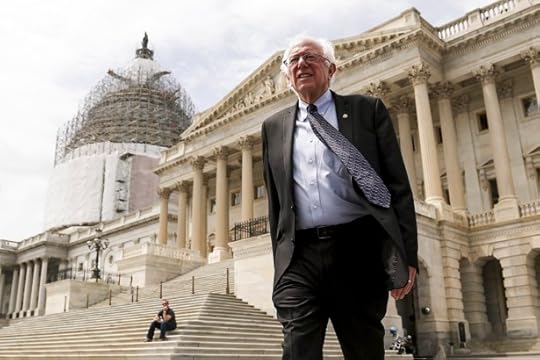
Political observers have long puzzled over who would challenge Hillary Clinton for the Democratic presidential nomination. As it turns out, the first person to step up isn't even a Democrat.
Vermont Senator Bernie Sanders, an independent and self-described socialist who caucuses with Democrats, made his run for the White House official on Thursday, with a statement to be followed by a larger event somewhere in his home state later this month.
Next week will see a flurry of other announcements. Two relative political novices on the Republican side, Ben Carson and Carly Fiorina, are making announcements on Monday, May 4, while Mike Huckabee—a former force in the GOP who's been quietly preparing for another run—will announce his decision on May 5.
With so many candidates in the mix—some announced, some soon to announce, and some still on the fence—it’s tough to keep track of it all. To help out with that, this cheat sheet on the state of the presidential field will be periodically updated throughout the campaign season. Here's how things look right now.
* * *
The Democrats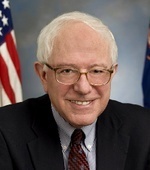 Wikimedia
Wikimedia Bernie Sanders
Is he running? Yes.
Who wants him to run? Far-left Democrats; socialists; Brooklyn-accent aficionados.
Can he win the nomination? No, although his campaign is really more about getting his ideas into the mix than about winning. In particular, he's an outspoken opponent of the Trans-Pacific Partnership, the free-trade agreement President Obama is pushing. Hillary Clinton once seemed to back the deal, but she's offered far more equivocal statements since declaring her candidacy. His candidacy could help to shape the debate on the TPP.
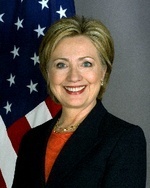 Wikimedia
Wikimedia Hillary Clinton
Is she running? Yes.
Who wants her to run? Most of the Democratic Party.
Can she win the nomination? Duh.
What else do we know? Maybe a better question, after so many years with Clinton on the national scene, is what we don't know. Here are 10 central questions to ask about the Hillary Clinton campaign.
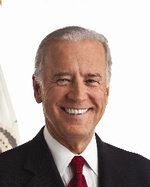 Wikimedia
Wikimedia Joe Biden
Is he running? He won't rule it out, but he's made no serious steps toward a run. He's addressing a "secretive" group of gay donors on May 2.
Who wants him to run? Joe Biden, maybe.
Can he win the nomination? If Clinton didn't run, it would throw the Democratic field into disarray. But probably not.
When will he announce? It seems ever more likely that he won't.
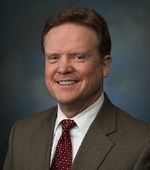 Wikimedia
Wikimedia Jim Webb
Is he running? He has launched an exploratory committee.
Who wants him to run? Dovish Democrats; socially conservative, economically populist Democrats; the Anybody-But-Hillary camp.
Can he win the nomination? Probably not.
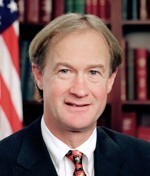 Wikimedia
Wikimedia Lincoln Chafee
Is he running? Chafee—who served in the U.S. Senate as a Republican and then as Rhode Island governor as an independent and then a Democrat—has launched an exploratory committee.
Who wants him to run? No one knows! Chafee's exploratory committee came out of nowhere, with little anticipation or fanfare or even rumors. He opted not to seek reelection as governor in 2014, in part because his approval rating had reached a dismal 26 percent.
Can he win the nomination? No. Chafee seems to be positioning himself as an economic populist and says Clinton's 2002 vote for the Iraq war should disqualify her (he was the only Republican senator to vote against it). In other words: He's Jim Webb with a less impressive resume, a less compelling bio (he's the son of longtime Senator John Chafee), and less of a political base. He gives himself even odds, though.
When will he announce? He says he wants to gauge support and fundraising and then decide in the next few months.
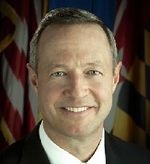 Wikimedia
Wikimedia Martin O'Malley
Is he running? Probably.
Who wants him to run? Not clear.
Can he win the nomination? Not with Clinton running.
When will he announce? Spring.
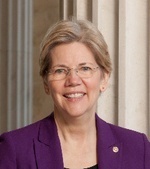 Wikimedia
Wikimedia Elizabeth Warren
Is she running? No. Seriously, no.
Who wants her to run? Progressive Democrats; economic populists, disaffected Obamans, disaffected Bushites.
Can she win the nomination? No, because she's not running.
* * *
The Republicans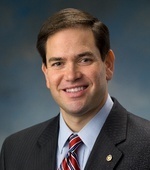 Wikimedia
Wikimedia Marco Rubio
Is he running? Yes—he announced on April 13.
Who wants him to run? Rubio enjoys establishment support, and has sought to position himself as the candidate of an interventionist foreign policy.
Could he win the nomination? Charles Krauthammer pegs him as the Republican frontrunner. His best hope seems to be to emerge as a consensus candidate who can appeal to social conservatives and hawks, and he's even sounded some libertarian notes of late. He's well-liked by Republicans, and has surged forward since announcing, but he needs to move up from second choice to first choice for more of them.
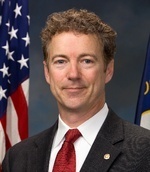 Wikimedia
Wikimedia Rand Paul
Is he running? Yes, as of April 7.
Who wants him to run? Ron Paul fans; Tea Partiers; libertarians; civil libertarians; non-interventionist Republicans.
Can he win the nomination? That depends who you ask. The Kentucky senator would be an unorthodox pick, with many positions outside his party's mainstream. He's relatively permissive on drugs and same-sex marriage, passionate about civil liberties, and adamantly for restraint on foreign policy. But Paul has worked hard to firm up establishment ties since reaching the Senate, and he has recently worked to paper over his differences with GOP’s hawkish wing, calling for a declaration of war against ISIS and generally saber-rattling. He is positioning himself as a candidate with crossover appeal in the general election, and his announcement email mocked the idea that only an establishment candidate can win a general election.
What else do we know? One of Paul's greatest strengths is the base bequeathed to him by his father, three-time presidential candidate and former Representative Ron Paul. But as The Washington Post has reported, his father is also Senator Paul's biggest headache, due to his penchant to speaking his mind on issues like secession. Ron Paul's institute also publishes fringe views like the idea that the Charlie Hebdo attacks were a false-flag operation.
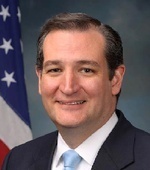 Wikimedia
Wikimedia Ted Cruz
Is he running? Yes. He launched his campaign March 23 at Liberty University in Virginia.
Who wants him to run? Hardcore conservatives; Tea Partiers who worry that Rand Paul is too dovish on foreign policy; social conservatives.
Can he win the nomination? Though his announcement gave Cruz both a monetary and visibility boost, he still starts with some serious weaknesses. Much of Cruz's appeal to his supporters—his outspoken stances and his willingness to thumb his nose at his own party—also imperil him in a primary or general election, and he's sometimes been is own worst enemy when it comes to strategy. But Cruz is familiar with running and winning as an underdog.
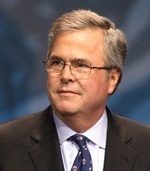 Gage Skidmore
Gage Skidmore Jeb Bush
Is he running? Almost certainly.
Who wants him to run? Establishment Republicans; George W. Bush; major Wall Street donors.
Can he win the nomination? No one really knows. Since jumping into the race, he has continued to poll well and raise lots of money. He seems like a lock to rack up all-important endorsements from top Republicans. But predictions that he would quickly come to dominate the field have not come to pass, and while many analysts predicted that his moderate record would cause trouble in Iowa and with grassroots activists, that problem seems to be deeper than expected. His poll numbers are probably helped by his name, which is a double-edged sword.
What else do we know? Since Bush's surprise announcement, he has tended to stay fairly quiet, delivering some big speeches and hitting fundraisers, but not making a great number of trips to Iowa or New Hampshire.
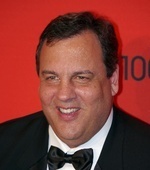 David Shankbone
David Shankbone Chris Christie
Is he running? Probably. The New Jersey governor has laid out a campaign plan (and a $30 million fundraising target) to donors. He seems to be focusing on New Hampshire, which is close to his home state, with staffer hires and town-hall meetings there. He has also formed a political-action committee.
Who wants him to run? Moderate and establishment Republicans who don't like Bush or Romney; big businessmen, led by Home Depot founder Ken Langone.
Can he win the nomination? The tide of punditry seems to have turned against Christie over the the last three months. While Mitt Romney's decision not to run might have aided him by creating space for a technocratic, moderate, Northeastern governor, he has struggled in New Jersey, where the state's credit rating is taking a beating and the political ramifications of the the George Washington Bridge probe are still shaking out and his favorability is atrocious. A recent Monmouth University poll showed him trailing even Donald Trump (see below) for the nomination. Plus, he'd probably have to resign as governor to run, because of SEC rules that cover donations from companies that do business with the state. With such high stakes, he might not want to run at all if he doesn't see a clear path to win.
When will he announce? According to Time, Christie has told donors that running is harder than he had realized, and that he may have to push back an announcement to as late as June.
What else do we know? If you can tell what is going on in this GIF, please let me know. Is he tossing the jacket away? Or catching it? And what does it mean?
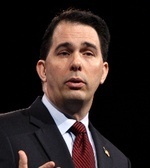 Gage Skidmore
Gage Skidmore Scott Walker
Is he running? Almost certainly.
Who wants him to run? Walker's record as governor of Wisconsin excites many Republicans. He's got a solid résumé as a small-government conservative. His social-conservative credentials are also strong, but without the culture-warrior baggage that sometimes brings. And Walker has won three difficult elections in a blue-ish state.
Can he win the nomination? No one knows. For all his strengths, Walker has never run a national campaign and isn't exactly Mr. Personality. But Jeb Bush's emergence seems to have helped Walker, propelling him to the front of the pack as a more conservative alternative to Bush. He's now solidly in the top tier of candidates.
When will he announce? Spring.
What else do we know? Barack Obama took a shot on April 7 at Walker for his criticism of a nuclear-deal framework with Iran. That's a sign that he's becoming a power player, and sniping from the White House is only likely to elevate Walker's standing with Republicans. Good news, bad news: Walker has a geographic advantage in his proximity to Iowa, but a potential biological disadvantage from his allergy to dogs.
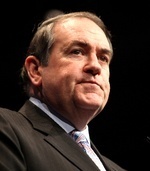 Gage Skidmore
Gage Skidmore Mike Huckabee
Is he running? Probably. He quit his Fox News show and recently published a campaign book titled God, Guns, Grits, and Gravy.
Who wants him to run? Social conservatives; evangelical Christians.
Can he win the nomination? Huckabee sure seems like an old-fashioned flavor, having sat out 2012. But he was a close third in the 2008 GOP primary, and his combination of affable demeanor and strong conservatism is potent. As it was eight years ago, fundraising is probably his Achilles' heel. He'd also be wise to stop attacking Beyoncé.
When will he announce? He's making a declaration on May 5.
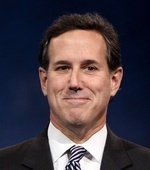 Gage Skidmore
Gage Skidmore Rick Santorum
Is he running? Yes.
Who wants him to run? Social conservatives. The former Pennsylvania senator didn't have an obvious constituency in 2012, yet he still went a long way, and Foster Friess, who bankrolled much of Santorum's campaign then, is ready for another round.
Can he win the nomination? It's tough to imagine. Santorum himself said his chances would hinge on avoiding saying "crazy stuff that doesn't have anything to do with anything." National Review Editor Rich Lowry praised his speech at a January summit in Iowa hosted by Steve King, the representative and conservative powerbroker.
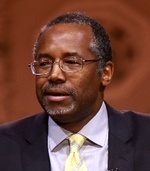 Gage Skidmore
Gage Skidmore Ben Carson
Is he running? Almost certainly.
Who wants him to run? Grassroots conservatives, who have boosted him up near the top of polls, even as Republican insiders cringe. Carson has an incredibly appealing personal story—a voyage from poverty to pathbreaking neurosurgery—and none of the taint of politics.
Can he win the nomination? Almost certainly not. Carson's politics are conservative on some issues, but so eclectic as to be nearly incoherent overall. He's never run a political campaign, and has a tendency to do things like compare ISIS to the Founding Fathers. It's hard to imagine his candidacy surviving more serious scrutiny, but then again he's reportedly building an impressive political organization, especially in Iowa.
When will he announce? Carson is expected to kick off his campaign with a major event on May 4 in Detroit, his hometown.
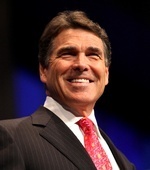 Gage Skidmore
Gage Skidmore Rick Perry
Is he running? Very likely.
Who wants him to run? Small-government conservatives; Texans; immigration hardliners; foreign-policy hawks. Noah Rothman makes a case here. (Perry's top backer four years ago, non-relative Bob Perry, died in 2013.)
Can he win the nomination? Maybe, but who knows? Perry and his backers insist 2016 Perry will be the straight shooter who oversaw the so-called Texas miracle, not the meandering, spacey Perry of 2012. We'll see.
When will he announce? May or June.
 Gage Skidmore
Gage Skidmore Sarah Palin
Is she running? A bizarre speech in January made a compelling case both ways.
Who wants her to run? Palin still has diehard grassroots fans, but there are fewer than ever.
Can she win the nomination? No.
When will she announce? It doesn't matter.
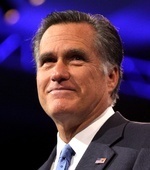 Gage Skidmore
Gage Skidmore Mitt Romney
Is he running? Nah. He announced in late January that he would step aside.
Who wanted him to run? Former staffers; prominent Mormons; Hillary Clinton's team. Romney polled well, but it's hard to tell what his base would have been. Republican voters weren't exactly ecstatic about him in 2012, and that was before he ran a listless, unsuccessful campaign. Party leaders and past donors were skeptical at best of a third try.
Could he have won the nomination? He proved the answer was yes, but it didn't seem likely to happen again.
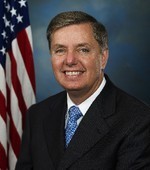 Wikimedia
Wikimedia Lindsey Graham
Is he running? Sure, why not?
Who wants him to run? John McCain, naturally. Senator Kelly Ayotte, possibly. Joe Lieberman, maybe?
Can he win the nomination? Not really. The South Carolina senator seems to be running in large part to make sure there’s a credible, hawkish voice in the primary. It seems like Graham started his campaign almost as a lark but has started to get into and enjoy the ride, plus he’s shown he’s a great performer on the stump. He’s still a longshot to actually win the nomination, but he could complicate Jeb Bush’s life by performing well in his home state of South Carolina—though he wasn’t even included in a recent straw poll in the Palmetto State.
When will he announce? By mid-May.
What else do we know? It’s still amazing that the man has never sent an email.
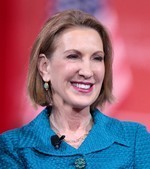 Gage Skidmore
Gage Skidmore Carly Fiorina
Is she running? There's a better than 90 percent chance.
Who wants her to run? It isn’t clear what Fiorina’s constituency is. She’s a former CEO of Hewlett-Packard, but there are other business-friendly candidates in the race, all of whom have more electoral experience.
Can she win the nomination? Almost certainly not. Fiorina’s only previously political experience was a failed Senate campaign against Barbara Boxer in 2010. She has mostly been serving the role of harasser in the race so far, stirring up the news with slams on environmentalists for causing droughts (your guess is as good as mine), Obama for backing net neutrality, and Apple’s Tim Cook for speaking out on Indiana’s Religious Freedom Restoration Act. Mainly, though, she has strongly criticized Hillary Clinton, and some Republican strategists like the optics of having a woman to criticize Clinton so as to sidestep charges of sexism.
When will she announce? Like Ben Carson, she's announcing on May 4. Unlike him, she'll be doing it with a low-key online announcement, rather than a rally.
Donald Trump
Is he running?
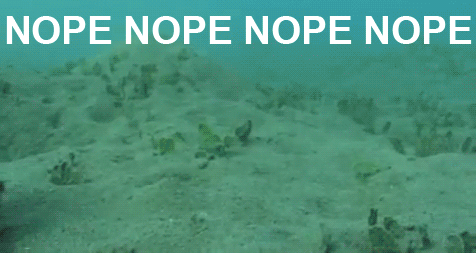
Others Still in the Mix:
John Kasich, Bobby Jindal, Pete King, Harold Stassen







Dadbod: A New Word for a Timeless Physique

Is "dadbod" a hashtag joke or a social-sexual movement? A bit of both, probably. A month ago at The Odyssey, Clemson sophomore Mackenzie Pearson explained that this “new trend” had “fraternity boys everywhere” rejoicing. "In case you haven't noticed lately, girls are all about that dad bod," she wrote. "The dad bod is a nice balance between a beer gut and working out. The dad bod says, ‘I go to the gym occasionally, but I also drink heavily on the weekends and enjoy eating eight slices of pizza at a time.’” In the time since, #dadbod has gone viral on social media, to the cheers of Jason Segel lookalikes everywhere.
The phrase is relatively new—TotalFratMove.com penned an ode to it eight months ago—but the idea isn’t. Every couple of years, some publication breaks the news that men without washboard abs are still somehow able to find a date. “It’s Hip to Be Round” read a 2009 New York Times headline, above a Guy Trebay story that attempted to coin “the Ralph Kramden” to describe the tummy shape fashionable among indie-rock concertgoers. Three years earlier, The Observer proclaimed “Man Flab, It’s Fab,” with Sara Vilkomerson writing, “One by one, from Hollywood to the Hamptons, men have liberated themselves from the flat-stomached emo-boy reign of terror.” The supposed movement wasn’t toward obesity—even if, nationally, that’s the only body-type trend that can be backed up with statistics—but toward a "sort of doughy mattress, soft but not squishy, and no beer gut,” Vilkomerson wrote.
Related Story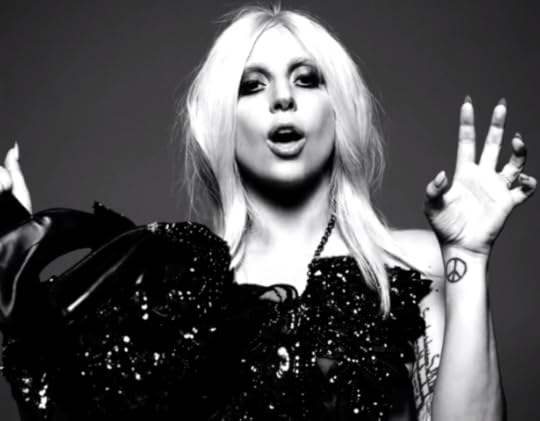
Understanding the Rise of 'Yaaaaas'
It almost goes without saying that the dadbod regimen of play sports, eat pizza is exactly what pop-culture has long said guys should be doing while women strain to maintain what Vilkomerson calls "the holy size zero." Desirable body types have varied across cultures throughout history, and all the recent chatter about the "era of the booty" shows that there's more than one in-vogue silhouette for women. But the flabby-guy/skinny-girl trope is old enough that The Simpsons was sending it up 25 years ago. Women face pressure toward Barbie-doll sculpting; men get to remain proudly pudgy—welcome to Gender Studies 101.
But the term "dadbod" does feel new in a couple of ways. Pearson, the female college student who helped popularize it as a term of praise, also noted a five-part list of its plusses: “It doesn't intimidate us,” “We like being the pretty one,” “Better cuddling,” “Good eats,” “You know what you’re getting.” Check those first two selling points: They invert the idea that women are oppressed by double standards over appearance, and they embrace the notion that being "the pretty one" can be a pleasure in itself. You can see this as regressive, empowering, or just a statement of personal preference. The third pro-dadbod point, "better cuddling," shows up in more crass form during The Cut's discussion of the matter, where the writer Allison Davis offers the theory that “men with dadbods and doughier tummy areas are good at sex.” Here’s an example of women talking in public about men in much the way so many men talk about women, as sexual objects with a list of attributes. “I can't stop thinking about how offended I would be if men were talking about the ‘Mombod,’” Emily Shornick writes, and that’s precisely what makes the phrase feel kind of transgressive. The dadbod turns the tables.
A catchy name for your physique doesn't mean you're special; it means that finally, you’re like everyone else.What of the term itself, dadbod? Why dad? Some dads do Crossfit, some are just, you know, skinny. But the image of the stereotypical dad with a set of uncool aesthetics and tastes—dadcore, dadrock—has been on the rise lately, summed up by The Toast's fake and hilarious Dad Magazine covers. This, too, marks a turn away from men as the cultural default, perpetual subjects instead of objects; and interprets them instead as just another group of people to be scrutinized. There’s something faintly mocking about #dadbod and other forms of dad terminology: an understanding of fathers not as authority figures but as soft, lovable doofuses. It's fair play—with men still wielding most of the cultural and economic power, nobody's actually hurt by some chuckling about Steely Dan and un-taut stomachs.
In fact, a lot of men feel liberated. Check Twitter to see all the guys hailing the new terminology as a hall pass; praise for something that they came by naturally.
That moment when you realize #dadbod is the wave. pic.twitter.com/Iip7PCGvt0
— Complex Style (@ComplexStyle) April 30, 2015
I don't feel so ashamed of my body anymore. I got one of the best #dadbod's around...
— Kyle Aguilar (@TheKyleAguilar) April 30, 2015
But it’s probably a mistake to take too much satisfaction from having a dadbod. A certain amount of paunch has always been attractive to a certain number of people, and a certain number of people still prefer the tighter types, while still others want the rollier and pollier. The rise of dadbod probably marks not shifting tastes but rather shifting ways of talking about tastes, where straight women get to use the same taxonomies straight men and queer people already employ, for better and worse. Gay guys have long fetishized “daddies,” though that’s label is age-dependent and "dadbod" probably has more in common with the gay “cub”; lesbians talk in terms of high and low, femme and butch; straight guys sling bra sizes, “BBW,” “butterface,” and all manner of terms heard in rap songs and frat houses. So take note, dadbods: A catchy name for your physique doesn't mean you're special; it means that finally, you’re just like everyone else.







Rescue and Recovery in Nepal
 Five days have passed since Nepal suffered a magnitude 7.8 earthquake, and rescue teams are still discovering trapped victims alive in the rubble. The massive quake shook Nepal's capital and the densely populated Kathmandu valley on Saturday, devastating the region and leaving tens of thousands shell-shocked and sleeping in the streets. The UN launched an appeal for survivors in dire need of shelter, food, and medical care as anger boiled at the government's inability to cope with a disaster that has killed more than 5,400 people. Many remote villages affected by the quake are still waiting for rescue and relief teams. The following images were taken in Nepal over the past few days.
Five days have passed since Nepal suffered a magnitude 7.8 earthquake, and rescue teams are still discovering trapped victims alive in the rubble. The massive quake shook Nepal's capital and the densely populated Kathmandu valley on Saturday, devastating the region and leaving tens of thousands shell-shocked and sleeping in the streets. The UN launched an appeal for survivors in dire need of shelter, food, and medical care as anger boiled at the government's inability to cope with a disaster that has killed more than 5,400 people. Many remote villages affected by the quake are still waiting for rescue and relief teams. The following images were taken in Nepal over the past few days.






The Baltimore Riot Didn't Have to Happen
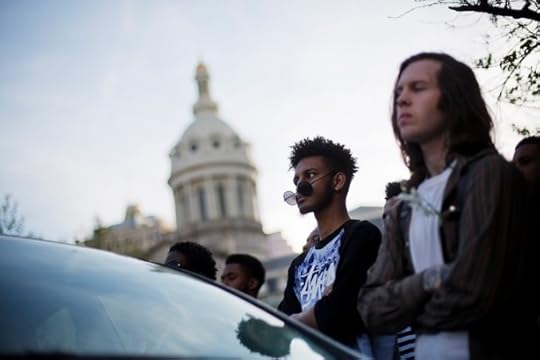
No riot is normal, but after several days of peaceful protests, the violence that broke out on Monday in Baltimore looks more and more like a strange departure.
There's a familiar narrative around this outbreak of violence that makes it fit into our experience of past riots—Ferguson to Los Angeles to Detroit to Hough. The arc is scripted: Citizens get angry, tensions build and build until they boil over, violence erupts, and then people go home and the city begins the process of cleaning up. But after two relatively quiet and calm nights in Baltimore, that arc doesn't seem to apply. Instead, there seems to have been a consistent level of peaceful anger for two weeks, punctuated only by two moments of destruction. In that light, Monday's riots aren't the natural climax of increasing anger but instead an entirely avoidable tragedy that might have been forestalled had city officials made different decisions. What if the riots never had to happen?
People have been demonstrating in the streets of Baltimore since Freddie Gray died on April 19, but violence has only really broken out twice: on Saturday, and then again on Monday, with widely televised standoffs between protestors and police, looting, and fires. Baltimore Police said that 16 people were arrested on Wednesday. By contrast, more than 100 people—that is, six times as many—were arrested in protests in New York City alone on Wednesday.
Related Story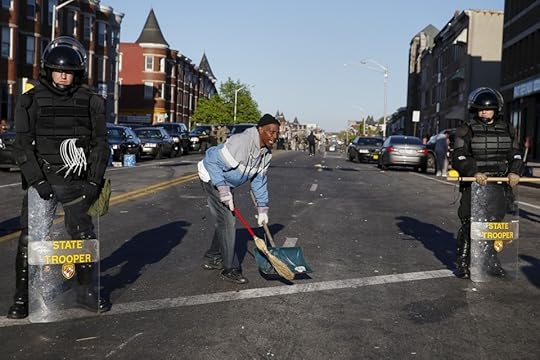
The Absence of Legitimate Authority in Baltimore
While the deployment of National Guard troops and a curfew imposed in Baltimore is surely a factor, it is not the case that protests have stopped and people have left the streets—quite the opposite. Hundreds of people marched in Baltimore again on Wednesday, convening at City Hall. Leaders of these marches have made a concerted effort to make sure that they remain peaceful, and hope that large, calm marches can help to bring the focus back from the rioting to Freddie Gray and the larger question of police brutality in the city.
There are other signs of return to normal as well. Mayor Stephanie Rawlings-Blake says she's considering lifting the curfew—which runs from 10 p.m. to 5 a.m., through Tuesday— and sending the National Guard home early, citing the potential damage to businesses but necessarily acknowledging that the streets are basically calm. Meanwhile, half of the roughly 200 people arrested on Monday were released from jail. That's despite the fact that Governor Larry Hogan signed an order that allowed people to be held for longer than usual without charges. Police said they haven't had time to sift through the evidence and might file charges yet, and they insist the arrests were justified. (Kriston Capps notes here that, unusually, the Baltimore city jail is funded and run not by the city but by the state of Maryland.) But the fact that they're simply letting people out suggests that worries about violence breaking out again have subsided.
So why was Monday different? There are competing narratives, likely all with some truth. But with a few days' perspective, it looks like a combination of random chance and strategic errors by city authorities helped to create an explosive situation. First, there was the rumored "purge"—an idea circulating among high-school students, borrowing from the lawlessness in a fantasy movie of that name—to gather at Mondawmin Mall in West Baltimore and head toward the Inner Harbor. It seems there weren't even all that many students interested in a rowdy march—maybe 75 to 100.
But when they got to the mall, they were met by a phalanx of police in riot gear, which increased tensions. (It's also a departure from the general tactics of Baltimore Police over the last two weeks—officers have typically tried to give protestors a wide berth to demonstrate.) The mall is also a transportation hub for students, and many students of all ages who were not involved in the "purge" were therefore present in the same place and trying to get home. But police were forcing riders to get off buses and preventing them from getting on other buses and trains. The result was a large group of young people stranded together with no way to leave, facing off against a line of police, likely scared and unsure of what to expect. Unsurprisingly, the situation boiled over. Once police started backing off, some faction of the crowds took advantage of the anarchy and began setting fires and looting.
The fact that "purge" wasn't enough to create mayhem on its own is borne out by what happened the next day. As Arthur Delaney and Julia Craven report, a call for a second "purge" planned for Tuesday circulated on Monday. Businesses shut down in anticipation. But when the appointed hour came:
The few masked protesters who showed up were vastly outnumbered by prayer groups and gang members who were at the mall in an effort to dissuade violence. Several families came with children, including Mekai Hines, a 12 year old who was there with his mom and brother.
"People have been talking about rioters coming to Security Mall, and I'm here with a prayer group and we're praying that people don't come up here and riot," Hines said.
(Gangs have played a surprisingly central role in helping to maintain peace and order.)
If Monday's riots were an anomaly, it undermines the condemnations by some observers of West Baltimoreans as members of a dysfunctional, self-destructive population determined only to hurt themselves. But if so, it also lends some credence to the complaint that the riots are a distraction from more persistent problems. My colleague Ta-Nehisi Coates decried hypocritical pleas for nonviolence on Monday, noting that even if violence produces little good, it can be an outlet for legitimate grievances. All of that can be true, and it can be true that the violence served to vent building pressure. But it may be that the riots never had to happen, and that Baltimore could have seen two weeks of essentially peaceful protests.
That doesn't mean the city won't boil over again. The central question of these protests—why is Freddie Gray dead?—remains unanswered. Police said Thursday they had completed their investigation and were turning the results over to prosecutors, but that they did not plan to divulge any new information publicly. Meanwhile, there are signs of pushback from within the police force—someone leaked a document to The Washington Post that purports to be the account of another suspect who was in the van with Gray, who claimed that Gray was intentionally trying to hurt himself. Attorneys for the Gray family immediately disputed the report, and WBAL's Jayne Miller said it conflicted with what Police Commissioner Anthony Batts had told her.
The continued paucity of information about Gray's death, especially if paired with an effort by police sources to blame him for his own death, could create new anger. And when, eventually, the details are leaked, it will create another tense situation. For the time being, however, Monday's riots look like neither a spontaneous and unavoidable outbreak of anger nor a self-destructive orgy, but instead like a sad and bizarre fluke.







The State of 2015's Summer Movies

Hollywood's summer almost always begins with a bang, then a scramble to maintain momentum. May 1 heralds the release of what is likely to be the industry's biggest earner of the season—Joss Whedon's Avengers: Age of Ultron, the eleventh installment of the Marvel Cinematic Universe, which some critics see as the spark igniting an inferno of reboots, sequels, and franchises that threatens to engulf modern moviemaking. The coming months will do little to quell those fears, but outside of the Avengers machine, there's no project in the works that feels like a truly safe bet, however big the budget or familiar the title.
The success of the Marvel saga is, more than anything, its reliability—no matter who the hero on the poster is, the money always rolls in (last year's Guardians of the Galaxy, starring TV's Chris Pratt and based on a largely unknown comic, took $774 million worldwide). Every other studio is looking for that kind of cachet, and is throwing everything against the wall in the hope some of it sticks. Each summer brings its share of sequels and remakes, but there's an desperate air around many this year. Audiences haven't embraced franchises like Jurassic Park, Terminator, Mad Max, or Vacation in a generation, but Hollywood is betting that, despite their age, name recognition still rules.
 Disney
Disney Nonetheless, May offers the best chance to enjoy that rarest of breeds: the auteur-made, original blockbuster that's neither adaptation nor spinoff. That's Brad Bird's Tomorrowland (May 22), a Disney production that remains shrouded in mystery weeks before its release. Trailers indicate the plot revolves around a magical sci-fi world that George Clooney and his young charge Britt Robertson can visit, but details have been kept mercifully brief in the moving teasers. Its unknown plot makes Tomorrowland more of a risk than most of the projects debuting this summer, but Bird's involvement should prove tempting. After directing three animated-feature classics—The Iron Giant, The Incredibles, and Ratatouille—Bird's 2011 live-action debut was the balletic Mission Impossible: Ghost Protocol, which compensated for its nonsensical plot with truly breathtaking action sequences. Tomorrowland promises more of the same, but grounded in Bird's original storytelling (co-written with the Lost showrunner Damon Lindelof).
The idea of a rebooted Mad Max (subtitled Fury Road, out May 15) seems far more groan-worthy. But the singular George Miller is still behind the wheel of the series 36 years after his first Mad Max; Mel Gibson is nowhere to be seen (replaced with Tom Hardy); and the trailers offer an eye-popping new vision of Miller's sand-swept desert apocalypse. Whether or not Warner Bros. was wise to sink $150 million into an R-rated dystopian car-chase, Fury Road at least stands out from the rest of May's offerings. It's hard to know who'd want a remake of Poltergeist (May 22) considering the plethora of cheaper, more original horror films on offer today, but Fox has revived it anyway. The sequel Pitch Perfect 2 (May 15) is nice to see even if simply because it's a major franchise targeted toward women. Meanwhile, The Rock will fly around in a helicopter rescuing earthquake victims in the ill-timed disaster flick San Andreas (May 29). The writer/director Cameron Crowe's latest effort to rekindle his career is titled Aloha (May 29) and boasts a charming cast (Bradley Cooper, Emma Stone, Rachel McAdams) and setting (Hawaii), but it's been a worryingly long time since he connected with audiences (his last three features were Vanilla Sky, Elizabethtown, and We Bought a Zoo).
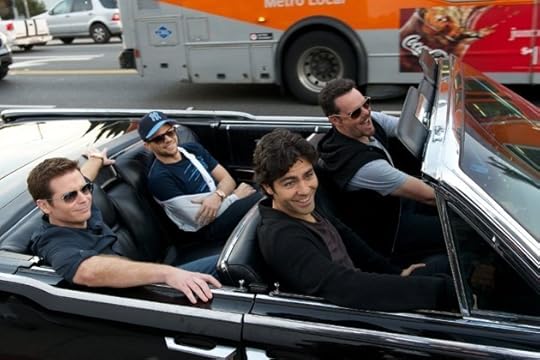 Warner Bros.
Warner Bros. In June comes a depressing pair of bro-y revivals: the big-screen debut of the HBO series Entourage (June 5) and Seth MacFarlane's Ted 2 (June 26), of which nothing more needs to be said. Even more trepidation accompanies the arrival of Jurassic World (June 12), the first Jurassic Park film in 14 years, but director Colin Trevorrow's approach has a depressing sameness to it. Chris Pratt has been brought in as the lead, and the family-friendly horror of Steven Spielberg's original seems to have evolved, with the plot focusing on a genetically engineered super-dino rampaging through an open park. Such splendid destruction is easy to buy onscreen these days, but genuine suspense or originality remain much harder to manufacture, let alone a good script. Let's hope for the latter in June's two biggest comedies: Pixar's Inside Out (June 19) and Paul Feig's Spy (June 5), the director's latest collaboration with Melissa McCarthy, which won raves at South by Southwest.
Feig's Bridesmaids and The Heat helped prove that women could be the target audience for a money-spinning blockbuster, but perhaps the biggest indicator that Hollywood is finally listening is the existence of Magic Mike XXL (July 1), a sequel that exists purely due to audience demand and feels as critic-proof as any superhero franchise entry. It's the one sure thing in a month ushered in by Paramount's Terminator: Genisys (July 1), from director Alan Taylor (Thor: The Dark World ). It's the latest re-seasoning of a series that hasn't really struck a chord with audiences since 1991, with a grizzled Arnold Schwarzenegger back as the visibly aged cyborg, but from the looks of the confused marketing, it exists only to clear up the franchise's muddled timeline, and thus open up a path for future sequels.
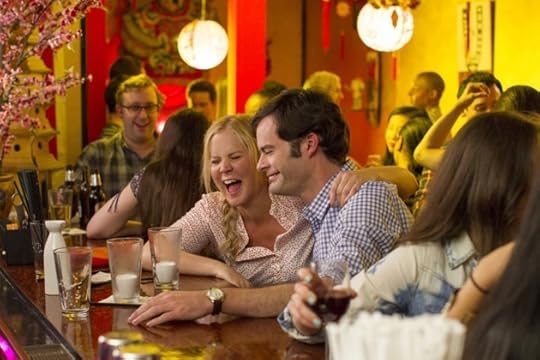 Universal
Universal Even Marvel's July entry, Ant-Man (July 17), feels like it's stumbling out of the blocks after losing original director Edgar Wright to "creative differences" last year. With a funnier tone and Paul Rudd as marquee idol, the movie feels like a smart direction for Marvel to pursue, but so far the action has looked a little flat, maybe because it's about a screw-up thief who fights crime by riding ants. The most promising comedy of the summer is due out the same week: Trainwreck (July 17), directed by Judd Apatow, stars Amy Schumer as a commitment-phobe who falls in love with a nice guy (Bill Hader), and has received rapturous festival praise. Apatow has always thrived at identifying talent and letting it shine on the big screen—Schumer is hardly a discovery at this point, but she certainly seems primed for superstardom.
There are too many hoary old properties getting revived to flesh out in detail, but along with Poltergeist, it's hard to imagine just who the audience is for films like Vacation (July 31, with Ed Helms in the Chevy Chase role), The Man From U.N.C.L.E. (August 14), or even a new Hitman (August 28), a video game spinoff whose 2007 debut was quickly forgotten. Fox's newest Fantastic Four (August 7) heralds a trend of ill-advised "grim and gritty" takes on comic books that are anything but—beware the Justice League onslaught that begins in 2016, which seems to be following the same path. Perhaps most jaw-dropping is Sony's Pixels (July 24), which sees a giant Pac-Man munching on cities while Adam Sandler screams in the background, and which no amount of arch self-awareness in the script could possibly forgive.
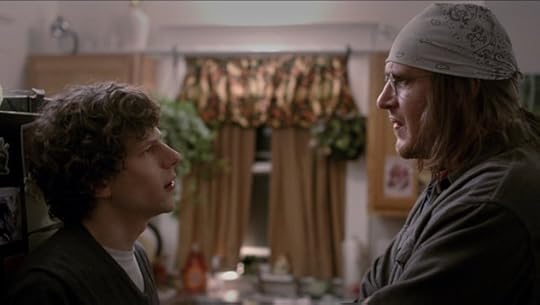 Anonymous Content
Anonymous Content Decrying studio laziness is never difficult, and the summer is always the easiest time of year to declare the sky is falling, but it's worth noting the amount of exciting independent and small-scale projects that will get significant releases in these months, coming off successful runs at Sundance, in Austin, or even on the Internet. Andrew Bujalski's romantic comedy Results (May 29) warrants attention thanks to a magnetic lead performance from Cobie Smulders (who's right there with the Avengers battling Ultron the very same month). The Sundance winner Me and Earl and the Dying Girl (June 12) promises well-earned teenaged tears; the festival also produced the surprise hit Dope (June 19), a hip-hop-centered coming-of-age film. James Ponsoldt's The End of the Tour (July 31) will attract notice for Jason Segel's performance as the late literary legend David Foster Wallace, but hits hardest as a stunningly smart portrayal of the banalities and idiosyncrasies of clinical depression.
Many of these smaller jewels will never get a wider release as a pixilated Pac-Man munches up theater space around the country, but video-on-demand means they can be seen faster, and more widely, than previous generations of filmgoers could ever have imagined. That's the most viable counter to the notion that Hollywood is awash in bombast—independent cinema has long existed, of course, but it's never been so accessible. As Age of Ultron rides roughshod over the box office and earns the billions it is basically due, remember that director Joss Whedon's previous film was Much Ado About Nothing—a micro-budgeted black-and-white delight filmed over 12 days at his Santa Monica home. As the traditional blockbuster swells ever bigger, so can the satellite industry around it.







The Man Who Changed Humor in America Forever
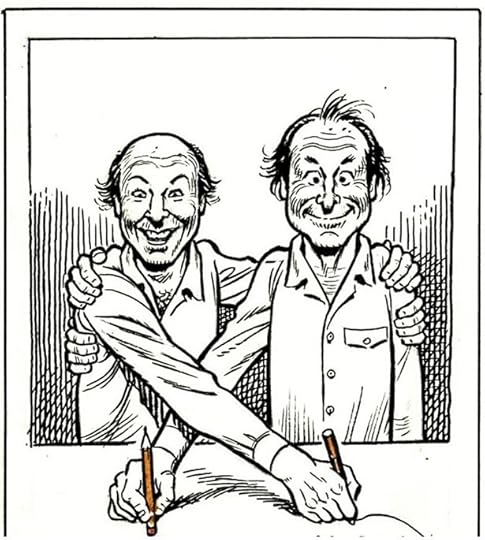
The famous publishing mascot Alfred E. Neuman—a big-eared, freckled boy with a wide grin missing a tooth—represents our country’s mid-century modern humor and the genius that made it happen: Harvey Kurtzman, founder of the original MAD comic book in 1952. It ran for 23 issues as an extraordinary satirical comic under the EC (Entertainment Comics) imprimatur, before becoming a magazine in 1955, but from its earliest days, MAD has been the quintessential deflator of folly and conveyor of “humor in a jugular vein.”
Kurtzman, who died at 68 in 1993, was the Matt Groening/Jon Stewart/Tina Fey of his day. The title of a new, exhaustive biography by Bill Schelly out May 2, Harvey Kurtzman: The Man Who Created MAD and Revolutionized Humor in America, makes this exceptionally clear, giving Kurtzman a hero’s welcome into the pantheon of American cultural pioneers.
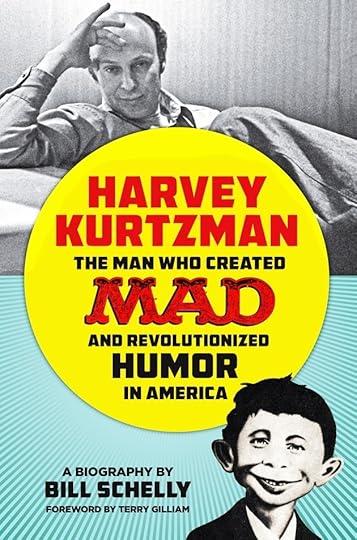 Fantagraphics
Fantagraphics “In MAD, Kurtzman challenged the repressive status quo in the early 1950s by satirizing cultural figures, politicians, and rampant consumerism,” Schelly told me in an email. “That kind of self-referential satire became the primary mode of humor in American culture, from Saturday Night Live to The Simpsons. I believe the questioning of authority in MAD led in some way to the counterculture moment of the 1960s and the anti-Vietnam war protests.”
Schelly became a Kurtzman fan before he knew his name, via the frequent MAD paperbacks of the 1960s that reprinted many of his best comics. “His name was omitted," he says, "but that didn’t stop me from laughing myself sick over stories like ‘Superduperman’ and ‘Woman Wonder!’” Kurtzman took aim at popular culture with parodies of brand-name heroes like these, which, while full of in-jokes, appealed to every boy of a certain age. An avid comic-book reader in his youth, Schelly discovered Kurtzman’s serious war stories in EC comics’ Two-Fisted Tales and Frontline Combat, which were published in the early 1950s at the same time as MAD. “Their ‘war is hell’ theme really hit home to me, a 19-year-old eligible for the draft in 1970," he says." By then, I knew Harvey Kurtzman’s name, and always wanted to know more about what made him tick, and how he created those brilliant comics. That’s why I wanted to write this biography.”
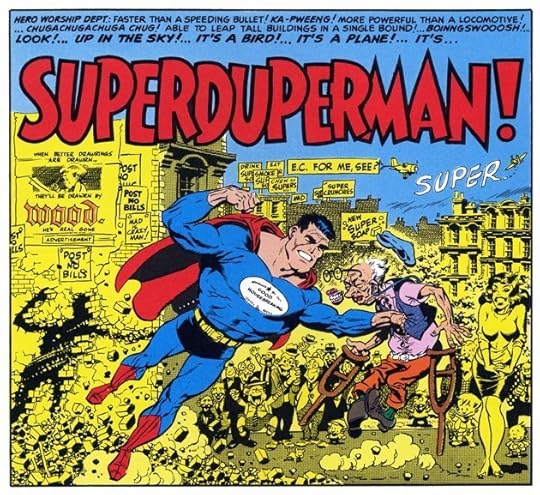 Copyright William M. Gaines Agent, Inc.
Copyright William M. Gaines Agent, Inc. 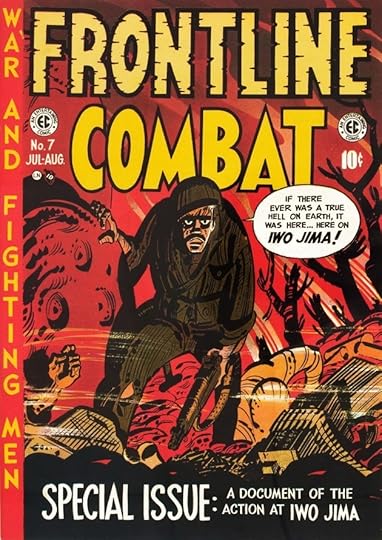 Copyright William M. Gaines Agent, Inc.
Copyright William M. Gaines Agent, Inc. MAD made a lasting impact on comics artists like R. Crumb and Art Spiegelman. As soon as Kurtzman left the magazine in 1956, the satire in MAD lost much of its nuanced relevance. “Others used what he did as a template, but an imitation can never match up to the original.” Schelly said. “He never would have run features like 'Spy vs. Spy' and 'The Lighter Side of …' for decades. The magazine under Kurtzman wouldn’t have been a predictable quantity, which probably means it wouldn’t have sold as well.”
Harvey Kurtzman: The Man Who Created MAD and Revolutionized Humor in America is exhaustively researched: The book is 642 pages, and the footnotes alone take up 27 of them. But in addition to the detail about why Kurtzman invented MAD are chapters about his childhood, and the early friends who became part of his lifelong comics circle. Although many went to the newly opened Music and Art High School in New York, the book raises the question of why they so ardently embraced satire.
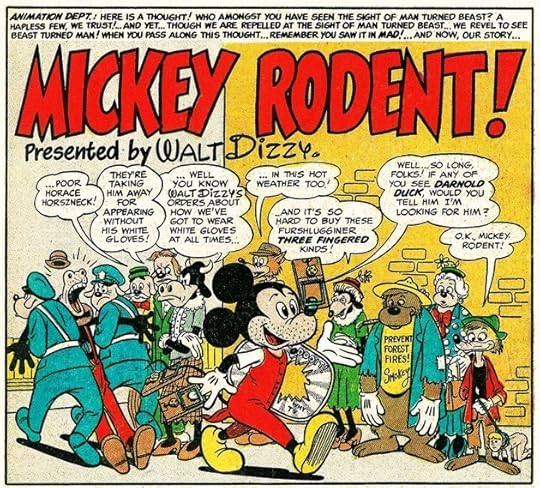 “Mickey Rodent!” by Kurtzman and Elder from Mad #19 (1955). Copyright William M. Gaines Agent, Inc.
“Mickey Rodent!” by Kurtzman and Elder from Mad #19 (1955). Copyright William M. Gaines Agent, Inc. “Since they grew up during the Great Depression, I think satire was their way of criticizing the excesses and pitfalls of capitalism,” Schelly says. “Probably the central theme of MAD is skewering hypocrisy, and the early 50s was a time of incredible hypocrisy. Society was obsessed with outward appearances and apparent morality, while under the surface, things like racism, injustice, fear of the atomic bomb, and political paranoia were seething.” But Kurtzman didn't consciously plan MAD as a way of making a critical statement. "It just happened that way, because he was working quickly and instinctively, and unconsciously headed in that direction."
MAD’s revolutionary spirit ran counter to the repressive Comic Book Code Authority, a self-policing industry group of publishers formed in 1955 that promised to rid comics of the sex and violence. That same year, MAD became a magazine, and a year later Kurtzman took his leave. It takes Schelly two chapters in the book to lay out all the reasons why, but the one Kurtzman most often cited was that publisher Bill Gaines refused to spend money to maintain the quality of MAD in its new format. Freelance writers earned $25 a page, “which he called a ‘schlock rate.’”
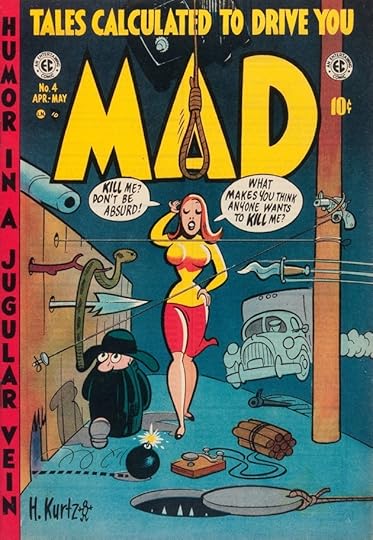 Copyright William M. Gaines Agent, Inc.
Copyright William M. Gaines Agent, Inc. After Kurtzman left in 1956, he tried his hand at three other humor magazines, Humbug, Help, and Trump, often with some of the same people from MAD, but in varying formats and frequently with lower budgets. “Unfortunately, lightning didn’t strike twice,” Schelly said. Humbug was an attempt to do a more adult satire magazine, but while slightly more sophisticated, it never quite eclipsed the original greatness of MAD.
During the four years working on this book, Schelly stumbled upon various revelations, including government documents detailing an FBI investigation of Kurtzman’s war comics by J. Edgar Hoover. “I was surprised to discover some of his personal contradictions," he says. "He was a writer-artist with both a towering confidence and a deep insecurity about his work. He was, in my estimation, a creative genius, and could have been an egomaniac, but he was genuinely modest about his work and his influence on other cartoonists." As a biographer, Schelly hopes to make up for Kurtzman's humility somewhat, by showing readers that, as the first producer of serious comic books, MAD's creator proved “that the sequential art form could be Art with a capital 'A'."
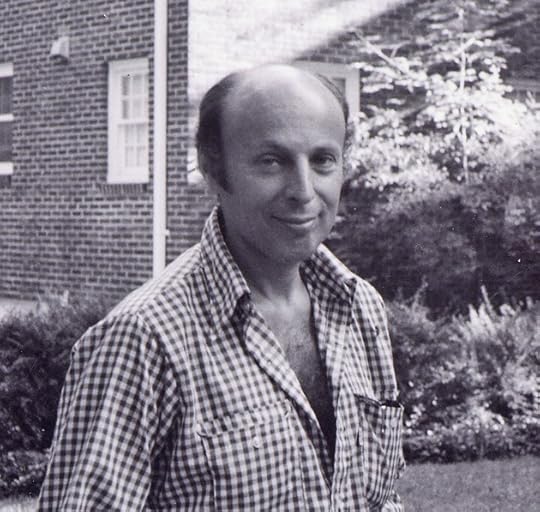 Copyright William M. Gaines Agent, Inc.
Copyright William M. Gaines Agent, Inc. 






Atlantic Monthly Contributors's Blog
- Atlantic Monthly Contributors's profile
- 1 follower



